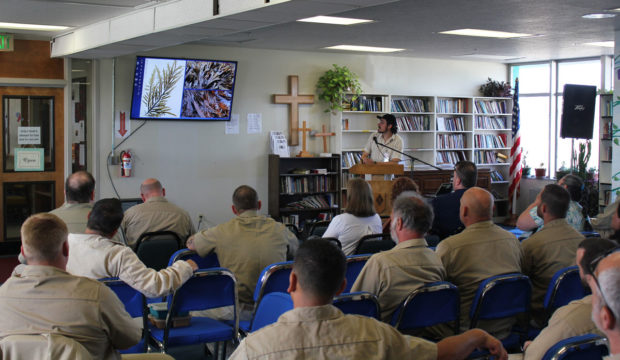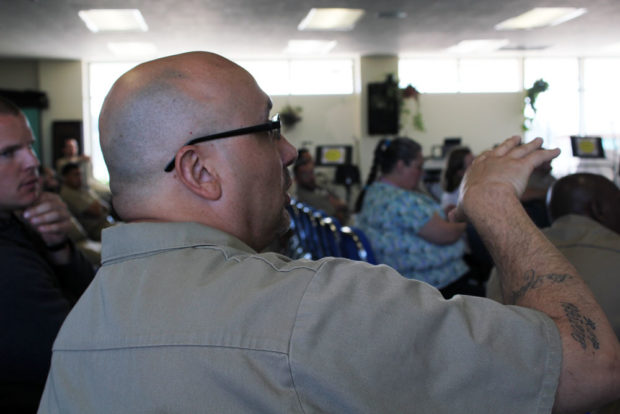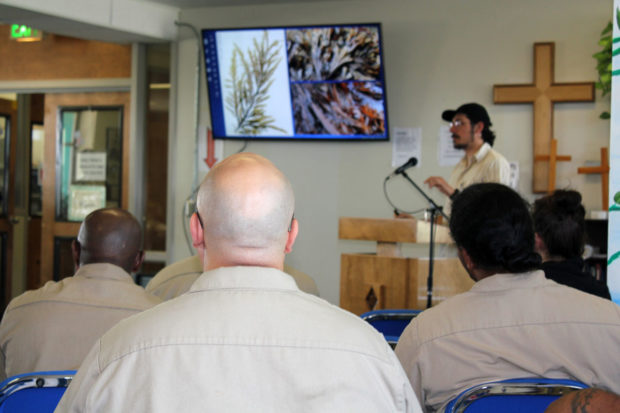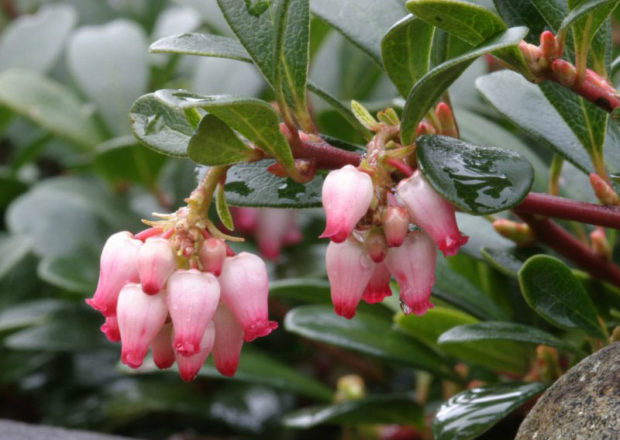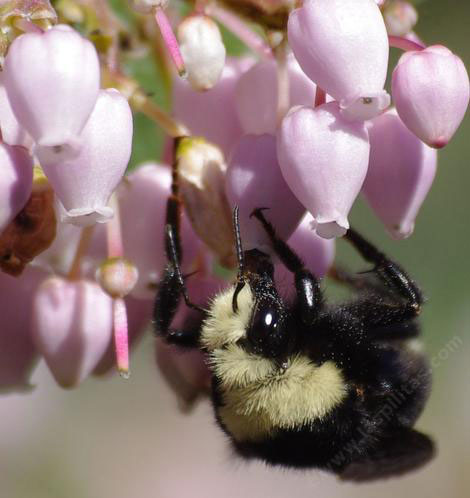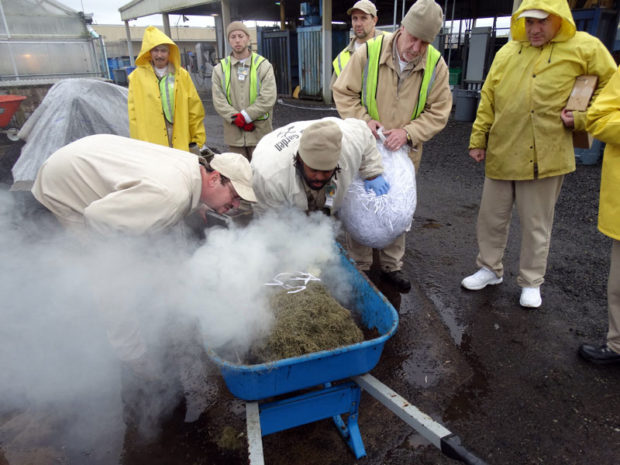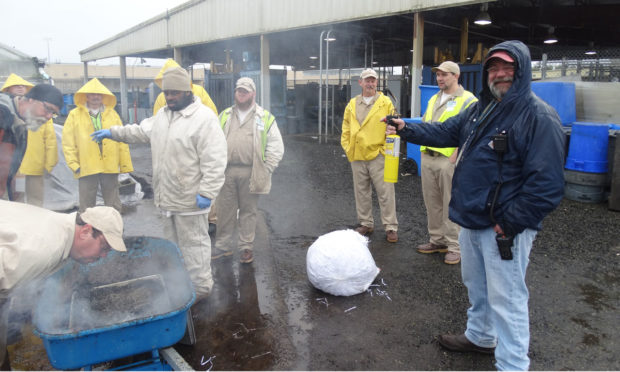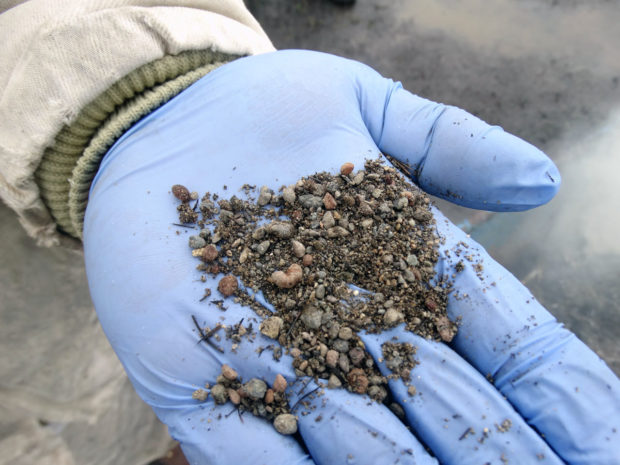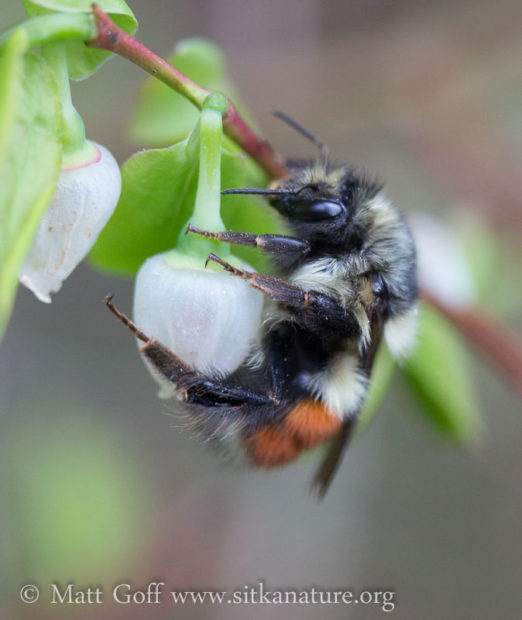
Early-blue violet. Photo credit: Alexandra James
by Alexandra James, SPP Conservation Nursery Coordinator

Teaching Assistant, Morris Talaga, inspecting a raised bed for weeds and pests. Photo credit: Alexandra James
Spring has sprung at Washington Corrections Center (WCC)! The Conservation Nursery is well underway with the cultivation of two viola plant species (Viola adunca & Viola howellii) that currently fill the twenty-nine raised beds that compose the core of the nursery. Viola adunca, commonly known as the early-blue violet, is a critical prairie plant species for the South Sound Prairie ecosystems of Washington State and Oregon. In fact, the early-blue violet is the only food source for the silverspot butterfly’s larval life-stage. This means that the silverspot caterpillar feeds only on the early-blue violet and relies on the plants sustenance for survival. Today, the silverspot butterfly is federally recognized as endangered due to the loss of native habitat and, in particular, the loss of the early-blue violet.
Why should we care about the silverspot butterfly? Like all butterflies, the silverspot butterfly is an important pollinator species. Without pollinators, we would see a collapse of our agricultural economy, food supply, and surrounding landscapes. Pollinators are essential in preserving biodiversity, preventing soil erosion, increasing carbon sequestration, and more importantly, providing us with ecological services, including our food and raw materials.
The WCC Conservation Nursery Crew is working hard to aid in the recovery of the early-blue violet. Technicians spend a vast majority of their time learning about, sowing, cultivating, and tending to thousands of viola plants—this is what it means to be responsible for the world’s largest violet production nursery! The crew dedicates year-round attention to the successful propagation of the early-blue violet and collects viable seed during the summer months to aid in prairie conservation efforts across Washington State. The seed they collect will be shared with state agencies such as the Center for Natural Lands Management and Joint Base Lewis-McChord, and go to prairie restoration initiatives that aid in the protection of butterfly species, including the silverspot butterfly. “The work we do is important and it is great to be a part of something so important and meaningful for our community; it means so much to give back” – Teaching Assistant, WCC SPP Crew.

Spring blooms of the early-blue violet. Photo credit: Alexandra James
In addition to the viola plants, the WCC Conservation Nursery Crew has sown over thirty-five different prairie plants to be used in a Prairie Demonstration Garden that will aid in the education of prairie landscapes to WCC visitors, staff and residents. All thirty-five plants are native to the South Sound Prairies of Washington State and Oregon. The cultivation and propagation of these native plant species will support hands-on environmental education for the crew and bring awareness to the importance our state’s prairie landscapes.

Propagation tray of native prairie plant (Achillea millefolium) for the Prairie Demonstration Garden.
